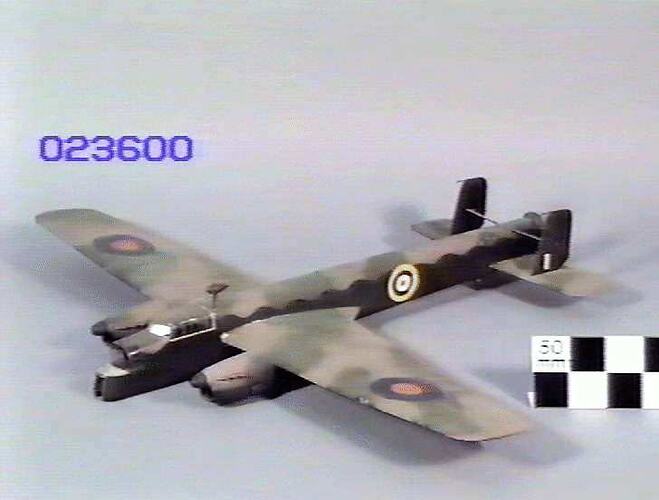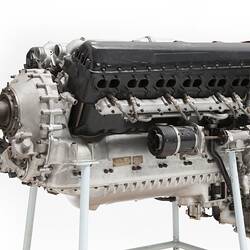Summary
Aircraft History
The A.W.38 Whitley bomber built by Armstong Whitworth Aircraft Ltd was first flown in 1936 as one of the first generation of monoplane bombers to equip the rapidly expanding Royal Air Force in the late 1930s. It was used by RAF Bomber Command on the early raids against targets in Germany and in March 1940 the Whitley was used in the first bombing raid on a German target (Hornum on the island of Sylt). Many of the early sorties dropped propaganda leaflets instead of bombs. Targets for these 'Nickel' raids included Berlin. The Whitley was used on the first bombing raid against Italy (Turin) and also by Coastal Command to search for U-boats. It is believed that RAF Whitley crews sank five U-boats. The modest speed and altitude performance of the Whitley made it increasingly vulnerable and it was withdrawn from most combat roles by 1943 to be used as glider tugs or parachute training aircraft. Australians serving with the RAF flew as members of Whitley's crews but the type was not flown in Australia. Most later versions of the Whitley were fitted with Rolls-Royce Merlin engines.
Model History
This 1:24 scale model of a Merlin engine Whitley was donated to the Museum by Armstrong Whitworth Aircraft Limited in 1953 for exhibition at the Jubilee of Flight Exhibition at the former Science Museum of Victoria. It appears to be an example of a 'factory' model produced by the manufacturer for promotional or display purposes. It carries no squadron markings but is finished in an early RAF night bombing camouflage scheme.
More Information
-
Collecting Areas
-
Acquisition Information
Donation from Armstrong Whitworth Aircraft Ltd, 10 Dec 1953
-
Modelmaker (Possible)
Sir W.G. Armstrong Whitworth & Co Ltd, England, Great Britain, circa 1942
-
Classification
Air transport, Aircraft, Model propeller aircraft - military
-
Category
-
Discipline
-
Type of item
-
Overall Dimensions
900 mm (Length), 1100 mm (Width), 200 mm (Height)
-
Model Scale
1:24
-
Keywords
Aeroplanes, Bombers, Military Aircraft, Model Aeroplanes, Scale Models, Wars & Conflicts, World War II, 1939-1945


